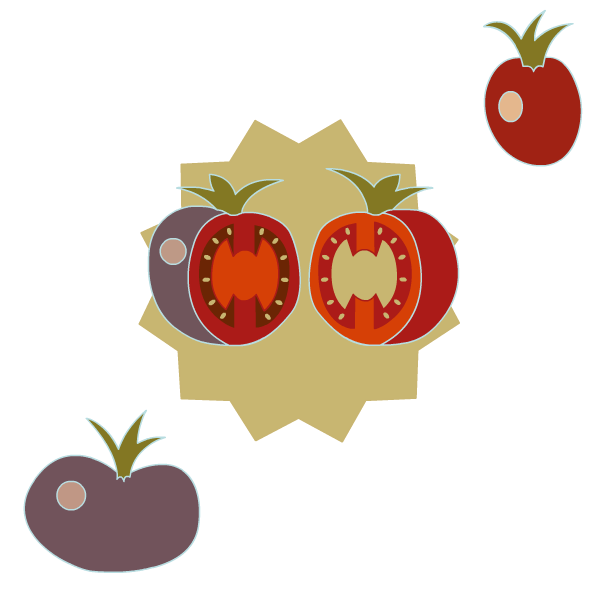Beautiful, flavorful, healthful.
Meet Midnight Roma: an antioxidant-rich, purple tomato developed at Oregon State.

A decade after after introducing Indigo Rose, the first antioxidant-rich, dark purple tomato on the market, Oregon State University vegetable breeders have done it again.
Midnight Roma is the result of crossing Indigo Rose with Oregon Star, a big, fleshy tomato, suitable for slicing or making paste with great flavor. Both Midnight Roma and Indigo Rose contain anthocyanins, the same healthy antioxidants found in blueberries.

吉姆·迈尔斯, a professor of horticulture in the College of Agricultural Sciences, developed both the Indigo Rose and Midnight Roma. “We were selecting for a really dark Indigo-type processing tomato,” he says. “Ultimately, we got a really nice one.” The Midnight Roma is ideal for home canning, has excellent cooking qualities, and Myers says chefs like it for making sauces. Serious Pie in Seattle, for example, uses Midnight Roma to make pizza sauce.
Row 7 Seed Co. in Tarrytown, New York, has exclusive rights for Midnight Roma and sells seed online. Co-founder Dan Barber, who has about 300,000 followers on Instagram, featured it on the social media platform and received more than 22,000 likes.
For Midnight Roma, Myers concentrated on flavor and disease resistance, coming up with a better-tasting tomato than many other paste tomatoes. It also is resistant to verticillium wilt. The plant is a semi-determinate variety, meaning the tomatoes tend to ripen at about the same time, making it timely for preserving. The anthocyanins are contained in the dark skin. So, to keep the antioxidants, the skin must be included in processing. Myers suggests running the sauce in a blender or food processor and then pressing it through a sieve, which he has done with success.
Midnight Roma darkens in the same way as Indigo Rose, and sunlight is key to getting purple skin, which contains the anthocyanins, Myers says. To achieve the highest level of antioxidants, use a trellis and prune excess leaves to allow the maximum amount of sun to reach the tomatoes. It’s ready to pick when the tomato’s color changes from a shiny blue-purple to a dull purple-brown, with the bottom turning from green to red.
In between developing Indigo Rose and Midnight Roma, Myers introduced Indigo Cherry Drops, Indigo Pear Drops and Indigo Kiwi, and seeds for all except Kiwi are readily available on the market. Breeding is a years-long, painstaking process of taking pollen from the male stamen to brush on the female style by hand. For each generation, Myers chooses the best and repeats the process until he produces a tomato up to his standards.
One of the parents for Indigo Rose, which led to its purple, anthocyanin-rich skin, was an experimental variety with wild tomato genes that was discovered by Carl Jones in the 1990s. Then an Oregon State graduate student, Jones was examining plants in a special collection at the University of California, Davis that is part of the U.S. Department of Agriculture’s National Plant Germplasm System. Now Indigo Rose is used to develop additional lines like the Midnight Roma.
Grow beautiful, flavorful tomatoes with help from Oregon State



